Like most home projects, there is nothing to say you cannot do a DIY job to render your Rillington home. If you have the time, skills, equipment, confidence and strength to do the job, you can do everything you need.
Of course, most people lack the time, skills, and confidence to take on such a massive job. If something goes wrong in the rendering process, you can cause significant problems at home. Also, resolving these issues might lead to higher costs and more hardship in the future.
Lime render is the name given to the base coat of lime plaster or closely related materials. Typically, lime render is applied to external walls and surfaces, such as brick buildings or stone surfaces. When the lime render is used exclusively indoors, it is known as lime plaster.
One of the reasons many people call on WeDoRender is that they don’t need to know how to make lime render. We do, and our techniques employed save you a lot of time and effort.
The mix consists of sand, water and lime, with the lime commonly being non-hydraulic. Other names for this lime include:
A lime render dries slowly, commonly taking between a day and three days for the lime render to dry. Other factors, such as weather conditions, external conditions and the condition of the exterior wall, influence how long it takes for the wall to dry.
Sometimes, it can take weeks for a coat to dry even on a flat and even surface, and it is not unknown for lime render mix to take a year to harden to its maximum level. With a thoroughly damp surface, the process is longer.
When using lime render externally, it is only suitable for temperatures above 5°C, which might be an issue in some locations in winter.
No matter when you plan to use this render or how it will be applied, rely on WeDoRender to take care of the process and application for you.
The leading difference between these materials is in how they are set. Hydrolysis with hydraulic lime (a reaction with water) offers rapid drying and a more robust set. For very porous surfaces, hydraulic lime renders are an excellent choice.
Non-hydraulic limes set more slowly, they are softer, and they are more breathable. These are still highly effective renders but better suited to properties with less challenging weather conditions.
There is also hydrated lime available from most builders' merchants. This material is commonly used with cement mortar, but be aware that this mixture isn’t a lime mortar, and in most cases, you are better off with a hydraulic lime or non-hydraulic lime mix.
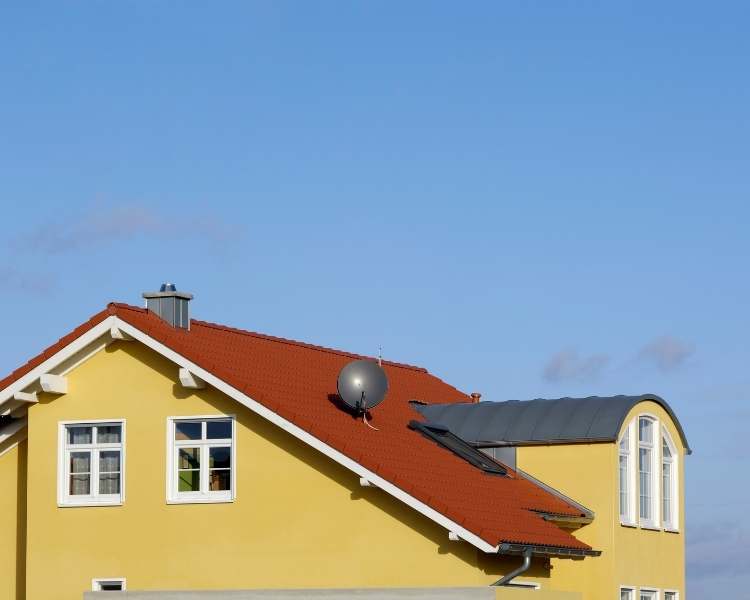
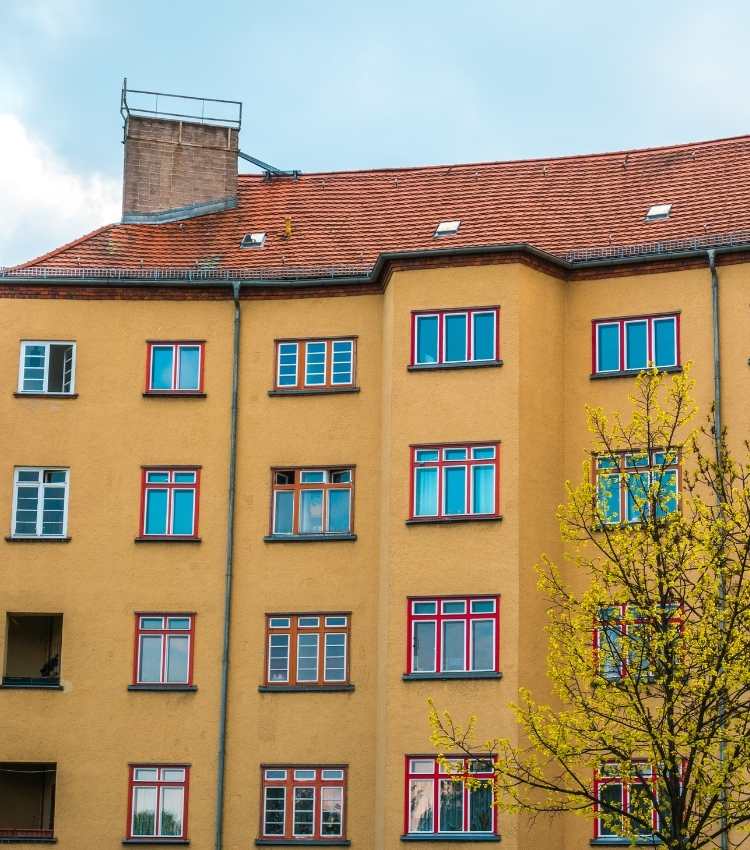
Given lime render has been a viable option for centuries, there are benefits and merits to the use of this product. If you are new to lime render or want more information to help you make an informed decision, we are here to assist you.
Lime work has many benefits, no matter your budget or the condition/age of your property.
Lime render is a permeable solution, which means the material can breathe. This is hugely important as it allows moisture to escape, which significantly reduces the likelihood of damage to a building.
The porous nature of new lime coatings reduces the likelihood of mould growing on a property. Mould is unsightly, so this improves the aesthetic nature of the property, but mould can cause health problems inside the house, so removing it from the property is a great outcome.
Another substantial benefit of lime render is that it is water-resistant and is a highly waterproof element. No matter the level of rain impacting your home, lime render is a tried and tested method of withstanding challenging conditions and keeping the inside of the house dry.
Lime plastering or rendering provides insulation for property. This helps to retain heat, allowing homeowners to lower their heating and energy bills. Given the rising energy bills, anything that reduces the cost of heating without making a property less comfortable has to be an excellent addition to a home.
The insulation benefits aren’t just about heat; new lime coatings deliver sound insulation too. This is an excellent addition if you are concerned about noise pollution or if external sounds impact your home life.
Lime plastering is also an environmentally friendly solution. Lime renders manufacturing process makes much less embodied carbon than what you’d see while manufacturing cement render. Lime renders also reabsorbs carbon dioxide. If you are looking for a greener render which doesn’t negatively impact the environment, you’ll find lime is a suitable choice.
Also, this is a subjective issue, so not everyone agrees, but lime render is a lovely material, and many people enjoy seeing it in or around their home. Knowing you receive the functional benefits from lime render while your home looks great is a huge comfort to many property owners.
This lengthy list of benefits means lime renders are worth considering for upcoming projects, and a quick recap of these benefits is as follows:
If you would like more advice or guidance on lime mortars, we are happy to assist you.
You might be pleasantly surprised at the range of lime render colours you can choose from. The majority of colours are natural stone or related shades, which creates a consistent aesthetic around the property.
These lime render colours are ideal for use with historical and heritage buildings where repair work takes place on the original façade.
However, if you have a contemporary building or wish to refresh the appearance of a property, you can choose a more modern colour scheme for the property. There is flexibility with lime render colours, ideal for property owners who seek as much choice as possible.
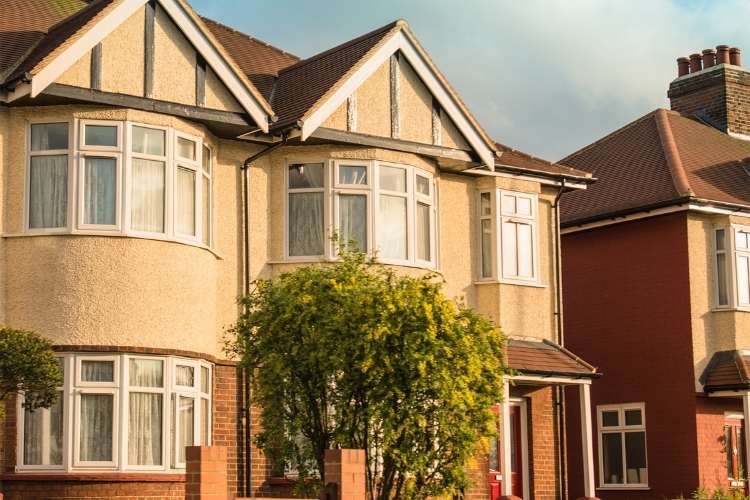
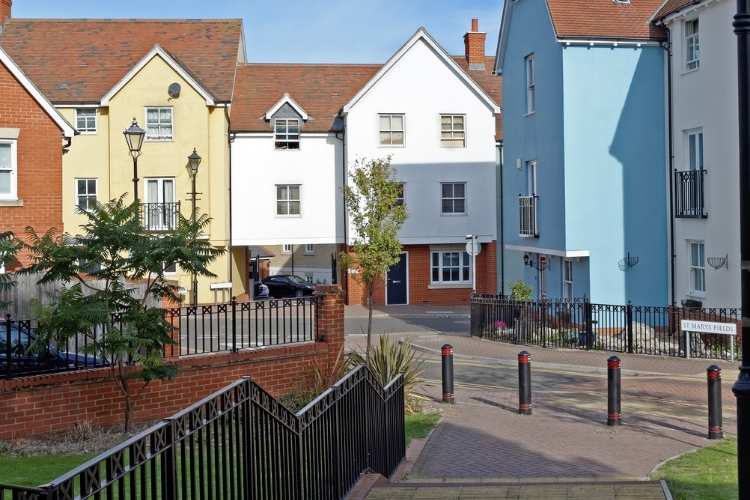
Those seeking more flexibility when it comes to lime plaster colours might consider painting their lime renders, but this isn’t a good idea.
Unless you have extremely specialist paint, which is expensive, painting over lime render negates many of the benefits of this product.
Paint impacts on the breathability of the render, negating its damp proofing capabilities. In the short term, painted lime render looks great, but over a long period, you don’t enjoy the benefits of this mix.
While cement render is the most affordable form of render, lime renders is probably the second most affordable option, certainly in the commonly selected render ranges. Thankfully, the range of benefits provided by lime render offer greater value for money than traditional cement render.
Lime render is breathable, it is highly flexible and it provides a damp proof solution. This is a mix that is a great choice for older homes, and it maintains a certain charm and period look for many homes.
With all these benefits, the average cost of lime render coming in at £20 per square metre is a good option. This is around twice the price of cement render, but the range of benefits on offer means many people are more than happy to pay this extra money to obtain a better product.
The My Job Quote site, as of the summer of 2022, provides a quick list of expected prices for lime render jobs. These figures are for the supply cost only, so other factors like labour, additional materials, equipment, location and so on need to be factored into consideration:
If you would like a tailored quote, taking all costs into consideration, please contact WeDoRender, and we’ll be happy to assist you.
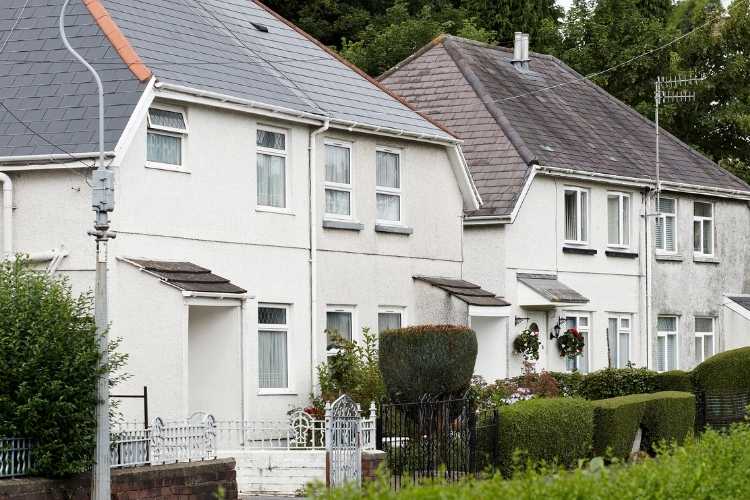

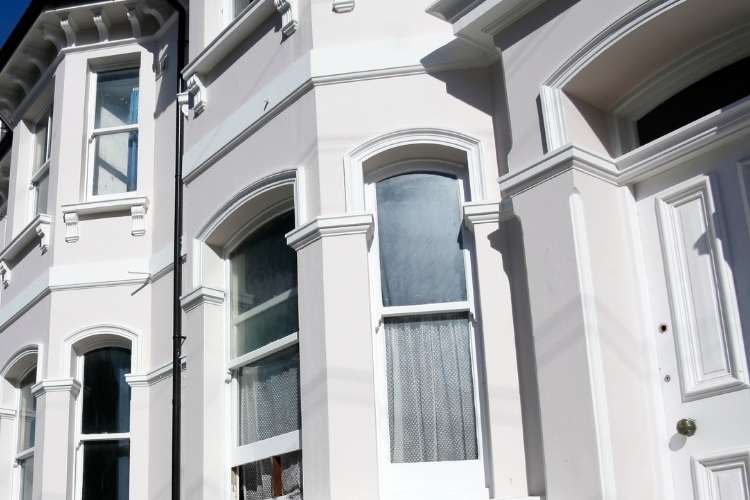
If you want to determine value for money with a project, how long it lasts is always a crucial component. Lime render is an excellent option, as it can last for a considerable number of years. There are many examples of lime mortars lasting for centuries, as long as it is well looked after.
If you commit to cleaning and caring for lime render at your home or property, there is no reason why it cannot last as long as you do!
If you use lime wash as a finish coat or a top topcoat with lime render, this limits the lifespan of the mix. With lime wash, you should commit to reapplying the substance every three to five years.
The best starting point when it comes to differences between cement render and lime mortar is the chemical composition of these products.
Lime is made from natural limestone, through the process of burning stone, leaving only quicklime. This quicklime is mixed with water to make hydrated lime.
Cement is a compound of various mixtures, including sharp sand.
For most people, there is very little difference between cement and lime render finishes, and only a specialist can easily tell them apart. Lime render has been around for longer, and if a building is older than the 1800s, it is likely that it has a lime mortar finish.
Concerning appearance, a cement render is likely to be smoother and more consistent. It is easier to create a sharp and defined appearance with cement, especially around the edges and at corners.
A notable difference between the two products comes with they deal with weather conditions.
Lime is more robust than cement, and it is less likely to rack. If your property is exposed to harsh weather conditions, lime mortar will withstand these conditions to a better standard. In turn, if you are looking for a waterproof solution, it makes sense to opt for lime render as opposed to cement render. Lime plaster will minimise shrinkage, even in poor weather or in strong sun.
Portland cement rendering, while affordable and a mainstay of the industry, has two key flaws. This is a substance which is prone to cracking, and it often falls directly from walls.
The weatherproof capabilities of lime render make them the ideal choice for many older buildings. These premises need assistance in minimising moisture, which is what lime mortar delivers.
More modern buildings have layers to deal with these features, and are less dependent on an external layer to reduce moisture, and remove damp. So, while cement is viewed as a traditional option in many things, it is probably a better choice with many contemporary homes than with period buildings.
Answering whether lime render is expensive is difficult, because the right answer for one person will be wrong for other people.
At its most basic level, lime plasters might be twice the price of cement render. If you’re on a budget, or you are very price sensitive, you will view lime render as being expensive.
However, if you want to render a historical building, or you need dependable weatherproof capabilities from your render system, cement rendering is unsuitable. In this regard, lime render is the best option, and will even offer value for money.
If you need to discuss the costs of lime render, or any render project, we are here to help. WeDoRender is highly experienced with rendering, and we know the challenges people and businesses face in finding a value for money solution.
We are always happy to offer guidance on these matters, so contact us today.
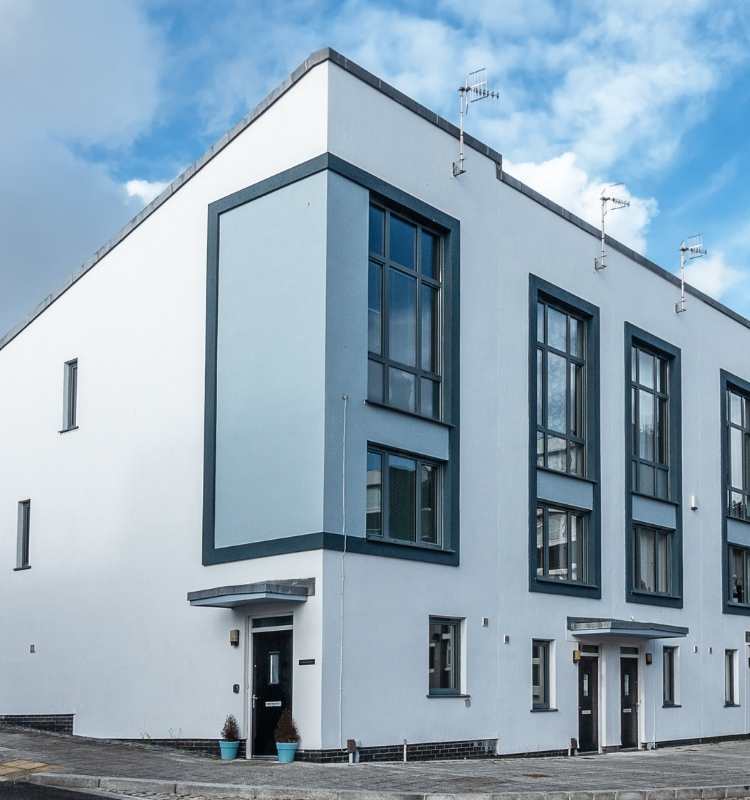
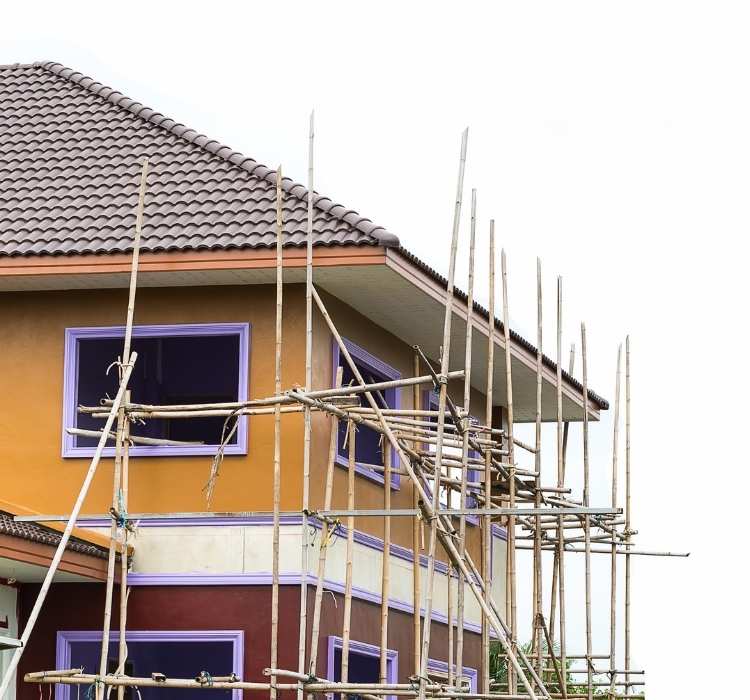
When it comes to rendering work, it is best to leave it to the experts. WeDoRender are lime render specialists, and we are more than happy to do this work for you. We can talk you through the process, ensuring you are confident in how lime plastering works and how we apply it to your property.
A three-coat system is typically used when adding lime plaster to a home.
The initial coat is the scratch coat, base coat or even the first coat. There are a few names, but no matter what you call it, this is a crucial step in ensuring you get all the benefits from lime mortars or rendering. Try to apply this to a flat and even surface.
The scratch coat layer is often around 10mm and is applied to the bare brick wall or substrate like exposed masonry. This layer features coarse aggregate and is scratched to ensure the finish is rough.
While you want top layers to be smooth and aesthetically appealing, a scratched base coat helps the next layer grip better. You should allow up to ten days for this surface to settle, but we’ll advise you on the exact timings.
The next coat is known as the float coat or second coat. This second coat also consists of coarse aggregate and is around the same level of thickness. However, this layer is finished smoothly, with only a minimal level of scratching. Again, you should allow up to ten days for this second coat to settle.
The final coat is lighter, sometimes known as the finish coat or the skim coat. Top coat plasters are just 4mm, so it is a thin layer compared with the previous two layers. This final coat has a smooth finish, and particular attention is placed on its decorative charm. You want this layer to look as good as possible.
With the finishing coat, you should allow up to four days for the newly applied render to set.
With improving technology and capabilities, it is possible to make the process simpler and faster. Some mixes allow for less drying time, and there are even reliable products which remove the need for the base coat, reducing the project by around ten days.
However, each project is essential, and we assess every job individually. If you would like to arrange for a quote tailored to the work required, please get in touch with WeDoRender. We are render specialists and look forward to assisting you in rendering your property.
When applying new lime plasters, you need to review the suction capabilities of existing layers. If there is poor or excessive suction, you’ll suffer from weak bonding. In turn, you end up with a weak and powdery interface, which might not sound terrible, but it ruins your hard work and effort.
A simple step to improve suction is to wet the surface down. A mist spray is often all you need to resolve the matter.
For porous surfaces, like old brickwork, you need to wet the surface more, perhaps many times.
It is easy to see why people leave the lime work to the experts, and at WeDoRender, we’re here to assist you. Whether you need advice, ideas, or you want to hire a specialist to take the project from start to end; we do everything you need and a lot more.
Contact us today to enjoy the most delicate lime renders at your home or premises.


Lime render can last decades, 10-20 years or more but the paint often used on it called limewash does need extra coats every 5-7 years.
Lime is added to the mix to strengthen its flexibility and prevent it from breaking when it dries. Hydrated lime is the most acceptable type of lime for rendering. colour-changing pigments or chemicals that promote bonding and drying could also be added to the rendering mix.
Lime-based renders, such as Baumit StarContact or MC55, are more flexible than cement renders, minimising the probability of cracking and the requirement for unattractive expansion joints.
Lime plaster is porous, allowing moisture to diffuse and evaporate. It becomes impermeable when appropriately treated with pozzolanic chemicals and animal fat.